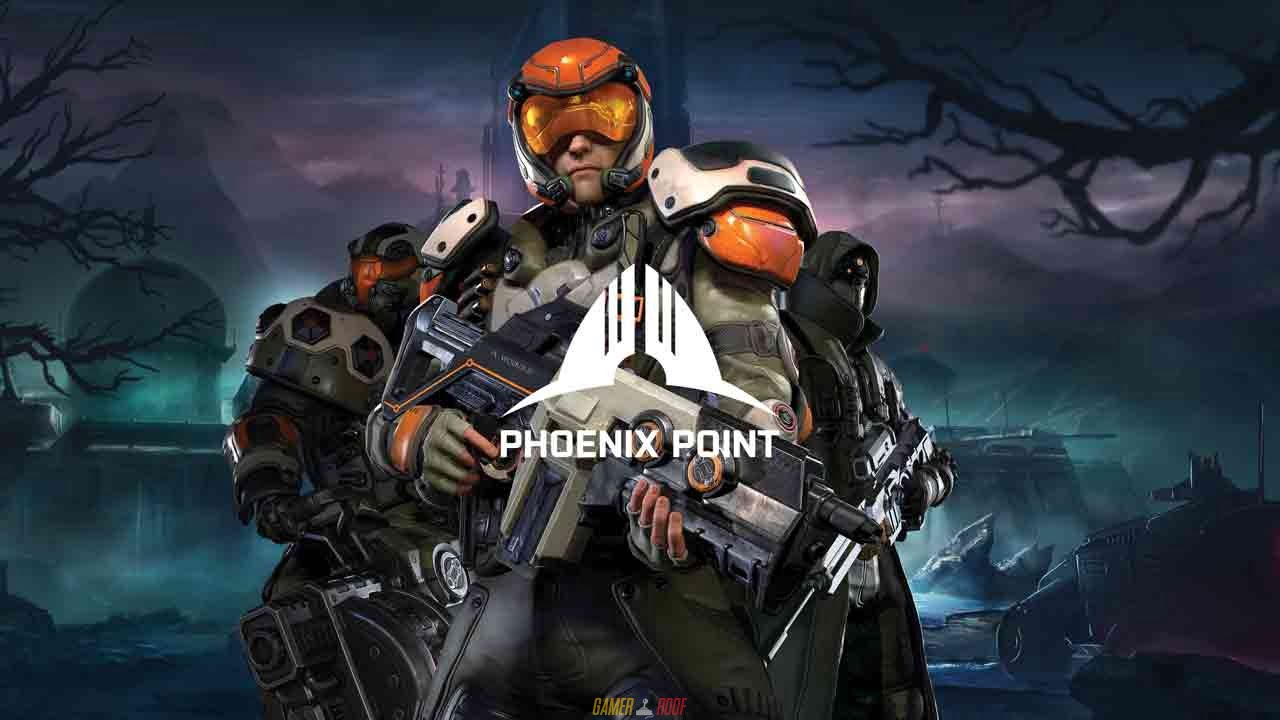Phoenix Point: Behemoth Edition Review (PS4) – Rising and Falling
From the ashes of XCOM rises Phoenix Point, does it live up to its lofty predecessors? The Finger Guns Review.
Coming hot off of the successful heels of the XCOM franchise, creative director and Snapshot Games’ CEO embarked on his own journey, delivering a new iteration of the same gameplay formula in the form of Phoenix Point, released in December 2019. Generally being received and reviewed positively, have the extra almost-two-years given this title the chance to rise from console ashes?
The time between the original PC release with the console version hasn’t been lazily wasted however, with Snapshot Games having developed 4 DLCs which come nicely stuffed into the Behemoth Edition. Given the length, depth and complexity of the XCOM series and the pedigree of talent behind Phoenix Point, there was certainly excitement and anticipation from myself about Phoenix, so let’s find out if the wait was indeed worth it.
Hello XCOM My Old Friend
Given the aforementioned talent behind Phoenix Point, it should come as no surprise it plays immensely similarly to Julian Gollop’s previous outings. Integrating challenging and chastening turn-based gameplay with a ruthless and time-sensitive global strategy structure, XCOM players will immediately feel right at home. For newcomers, there’s a brand new story, complete with its own history and lore, so entering at this point wouldn’t be inaccessible at all.
The similarities extend to level design, the overall focus and tactical nature of combat encounters, as well as the constant pressure of being low on resources, units and technology to balance which battles you will, and more importantly won’t, take on in your quest to save the Earth from a new fleshy threat: the Pandoravirus.
Having said that, this old dog has without doubt learnt some new tricks, and Phoenix Point differentiates itself from its ideological predecessors in some subtle and unique ways. With some interesting strategic additions to combat, new emphasis on managing relationships with factions and more dynamic methods it employs to ramp up the threat of ending your campaign, Phoenix Point certainly brings some new and engaging elements to the table. Not all of them land perfectly, but it provides the title with its own identity despite the glaring overlap.
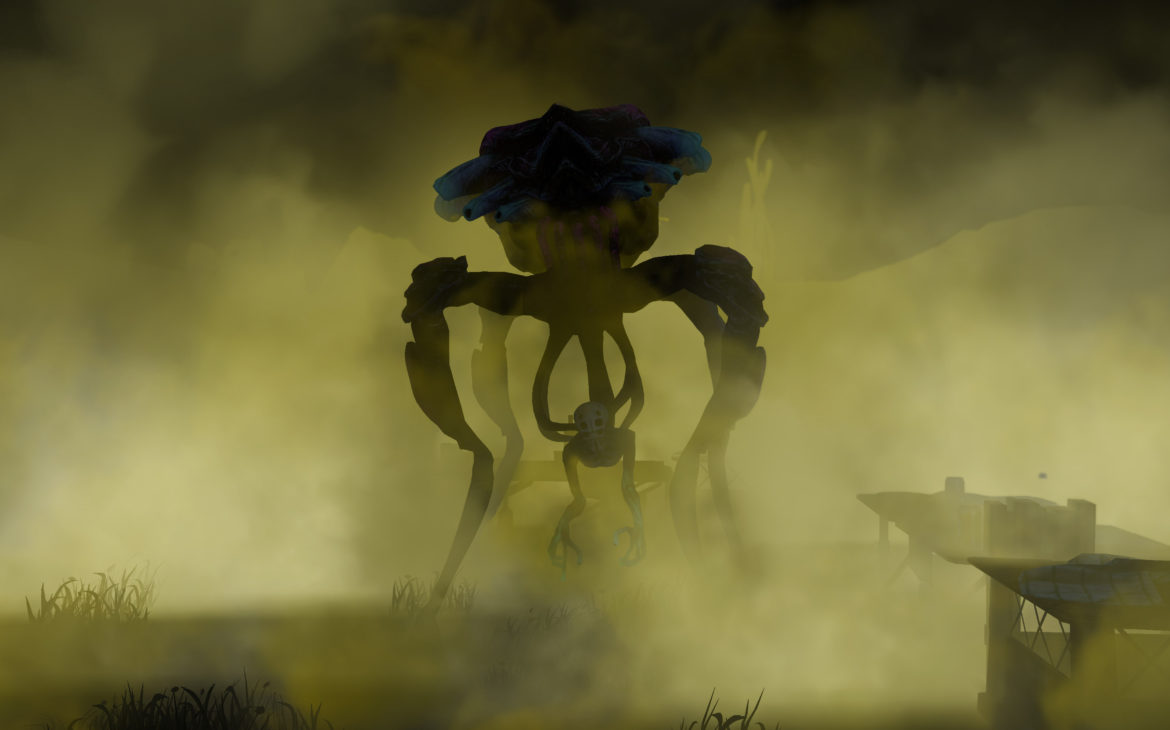
Humanity Faces Extinction… Again
Treading familiar territory, Phoenix Point introduces you to the new crustacean foe you’ll be fending off throughout your time in the campaign. There’s a brief introduction to get you up to speed: a cataclysmic event occurred on Earth when creatures started emerging from the sea and not-so-slowly destroying anything human looking. After decades of fighting, humanity has been reduced to 3 main factions, who hole themselves up in “havens” to provide protection from the Pandoran’s mist – a ghastly cloud of gas that slowly envelopes the globe.
These 3 factions, defined as the stubborn-minded humanity-first New Jericho, creepy but intriguing Disciples of Anu who believe only in evolution even if it means incorporating Pandoran life into human, and finally, Synedrion, who… argue a lot? Effectively a satire of a “utopic” civilisation, they are the least interesting of the three. Much of Phoenix Point’s story therefore revolves around scouring the globe for information to defeat the Pandoran threat, while either aligning, balancing or antagonising the different factions.
Narrative is delivered through cinematic stills with some decent voice-acting for the various leaders and characters who shoulder the responsibility of moving the plot forward. The leaders of the factions are well-defined with clear belief systems you’ll need to navigate. Frequently, you’ll be required to make text-based choices in response to their questions about your actions, intentions and views about your existential predicament. Additionally, they’ll often bicker between each other, so choosing your responses wisely should appear important, if you want to keep yourself in their good graces.
I say should, because in reality it’s actually quite straightforward to keep them all on board. Selecting a response might piss off one or both of the other factions, but in my playthrough it was easy to keep track of their percentage of friendliness to know how to respond best, and I was able to ally with all 3. They’ll still war amongst each other, but it didn’t seem to matter much. Of course, you can go full-bastard and antagonise all of them should you wish, but I genuinely didn’t see much value or reason to do so, as becoming friendly with them opens opportunity for trade and after some work, provides you access to their research and distinct items.
Basically, it pays to be good, which means there’s little incentive to do otherwise. The faction system ties into the game’s available endings and scenarios nicely, but other than deciding who you prefer, there’s no real stakes or penalties from staying neutral. It wasn’t spectacular, but the story and lore were pretty interesting and probably kept me more invested than expected.

Once More, Onto The Breach
But enough about story, the action and strategy is the reason we’re here, and Phoenix Point is both excellent and somewhat lacking in this regard, all at once. Skirmishes against the Pandoravirus works the same as previous XCOM titles – your squad of up to 8 units faces off against the squads of nasties until one side is all dead. Battles are turn-based, with each unit having an allocation of action points, consumed for movement, shooting, using items and deploying tech or abilities.
Cover is essential so as to not have your fragile soldiers wiped out rapidly, so balancing your offensive moves with maintaining a solid defence is integral to success. One nice addition to combat is the implementation of free-aim and body part targeting. Free-aim allows you to select where your unit will fire their weapon at an enemy, giving you the opportunity to disable specific body parts or ensure a better percentage chance of hits. Your units have two circle radius’ which indicate where your shots can land, so aiming for a torso may not disable an enemy’s movement distance like a leg might, but it’s a bigger target, potentially offering more damage. It offers up a delicate balancing act for each action as you try to maximise your resources in battles.
Which you’ll need to do, because as the campaign progresses, the difficulty will ramp up. New enemy varieties are introduced, ranging from weapon slinging crabmen to full on organic artillery units and buffing monsters that continually call in reinforcements. Adapting to what Phoenix Point throws at you is essential, and facing down different enemy squad composition is important as you prioritise who to gun for and how best to position your own units. There’s a lot to think about, for sure.
Yet, despite the undisputedly tactical and strategic nature of the battles, it never quite felt as satisfying or fairly balanced as previous XCOM games. One particular enemy type, introduced in the early mid-game, effectively allows the Pandorans to continuously call in reinforcements until it’s felled, while in most missions enemy reinforcements will arrive throughout anyway. It created scenarios where I wasn’t losing due to skill, but rather because the enemy waves were infinite and I’d run out of ammo, resources or manpower despite slaying dozens.
It’s aggravated even more when you’re required to capture said unit so can’t kill it, and it has a ridiculously high amount of movement and willpower points to evade your soldiers. Effectively, a couple of missions I simply had to give up on trying to complete because the odds are just stacked so disproportionately against you, you’ll just end up wasting hours with no result or reward. Interestingly, compared to previous XCOM games where I’d sometimes be outsmarted by the AI through superior strategy, I never lost a battle in Phoenix Point even when it had overwhelming numbers against me, I only failed when the requirements of the mission artificially hindered me.
Luckily, the campaign does account for this, so you can progress the story through other ways, but it sucked to have the sense of gatekeeping due to unnecessarily imbalanced difficulty spikes rather than genuine skill. Battles are otherwise satisfying, with use of verticality, destructible cover and your units’ various abilities coalescing into a rewarding turn-based tug-of-war.
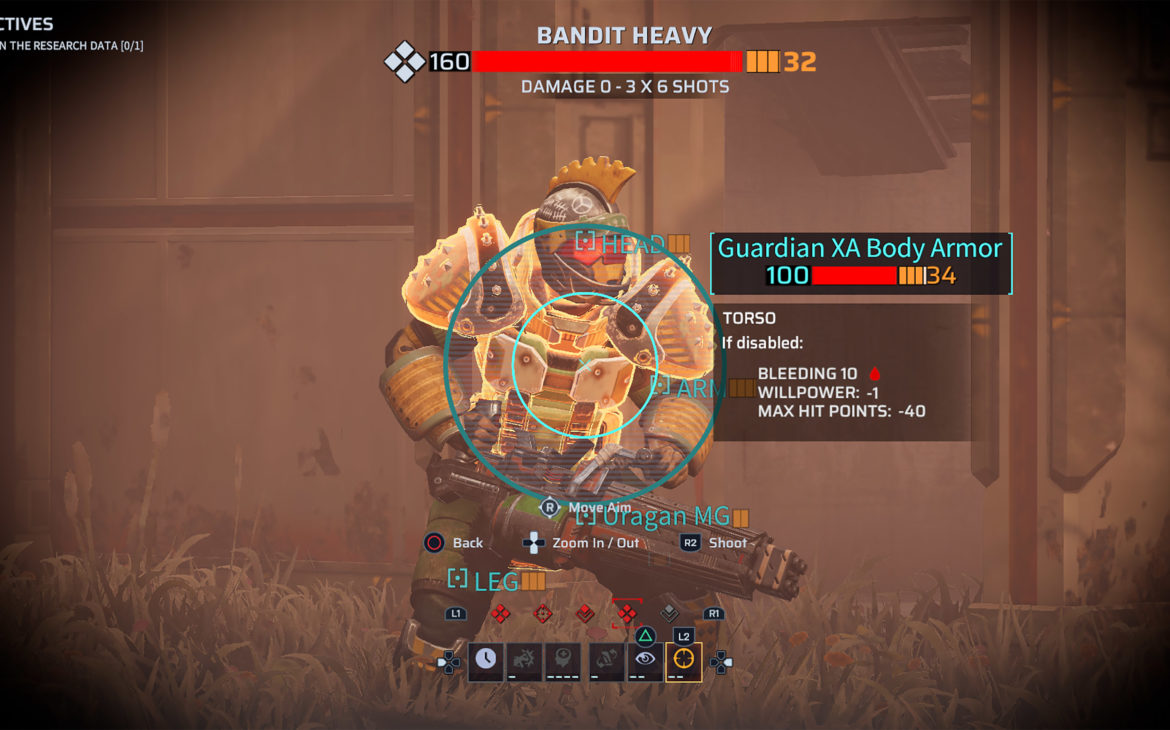
Fight The Global Fight
On a more macro level, Phoenix Point makes some interesting design choices with your role as a global commander. Starting out from a lonely Phoenix Point base you recapture in the prologue, you’re tasked with expanding your network of resistance bases and faction contacts across the planet.
There are dozens upon dozens of exploration points, little question marks that appear the further you expand out. Each point offers the opportunity to find resources, materials, new havens, research or lore exposition. Sometimes, you’ll even find nothing at all. Supposedly, there are ambush opportunities for the Pandorans to surprise attack you when you explore points, but this never actually happened to me in over 18 hours of playing.
Exploring and scavenging resources is once again central to your global expansion, as the use of tech and materials allows you to build new facilities in bases, bring more derelict bases online and craft new weapons, armours, items and vehicles. Unlike XCOM’s single base you developed over time, Phoenix Point allows you to have a plethora of bases, each able to house a variety of facilities which offer various buffs and bonuses. From allowing soldiers to recover stamina or health when stationed there, to providing food production and containment for captured foes later on. Most importantly, you can build satellites to scan the surrounding area for more exploration points and potential missions.
Missions come in a variety of ways. Story progressing Phoenix excursions will be marked as you go, sometimes close by, sometimes requiring you to build a network to reach. Side missions serve up opportunities to gather as many resources as you can before evacuating, protecting civilians or structures from attack, procuring vehicles or bases and most pressingly – defending faction havens from Pandoran assault.
It sounds like a lot to manage, but it usually boils down to kill everything, reach X amount of spots on the map or make sure not everything friendly dies/is destroyed. It’s a shame there wasn’t more mission variety given the opportunity for creativity with the different factions available, but there’s plenty here to keep you going at least. You can additionally choose to raid, steal from or assault faction havens for tech, resources or research, but again, you’re heavily disincentivised from doing so.
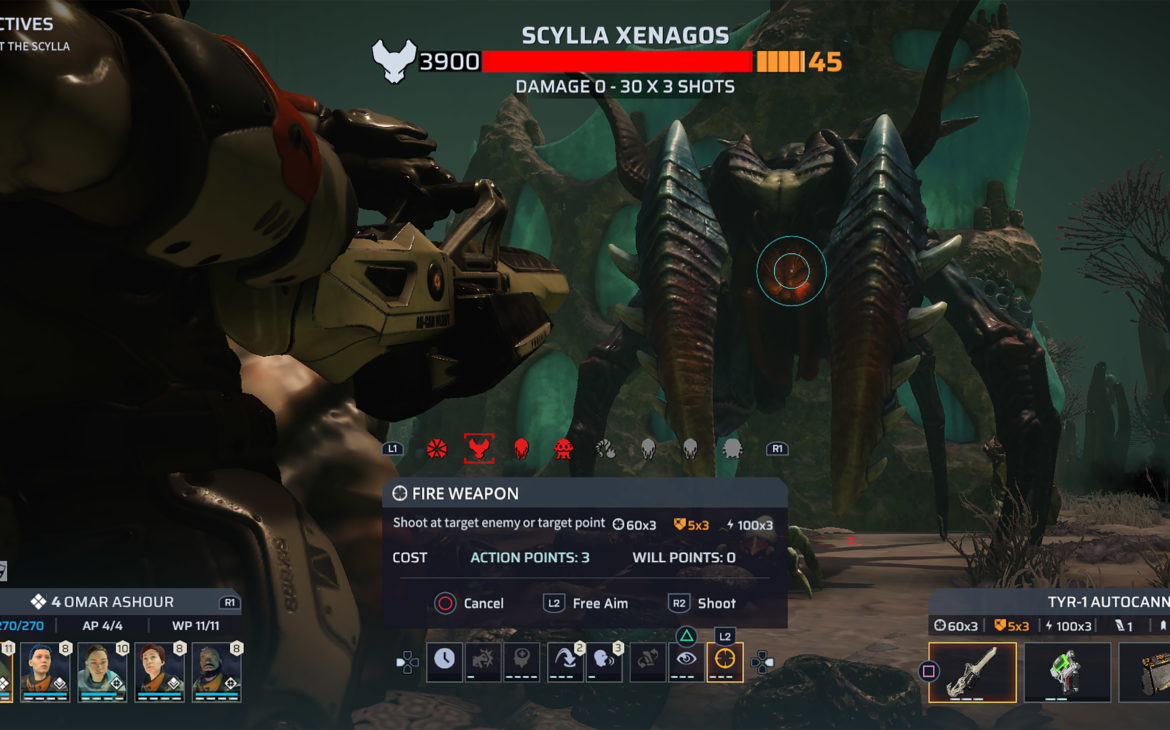
The Pressure of Time
The main reason you’ll struggle to contend with the Pandoran threat however, is that they won’t wait idly by as you build your resistance forces. No sir. Each action you partake in, whether flying to an exploration point or allowing your forces to recuperate at base, consumes time. Time is your most important currency in Phoenix Point, and it’s constantly throwing more and more alarming-looking icons at you as you play.
Want to research and manufacture a new weapon? Too bad, the 13 hours it takes will mean that haven is gone by the time it’s ready. Need that new Manticore aircraft to repel their stingray-looking aircraft? Tough luck, you don’t have the days required before it strikes out on a supply run. You’re constantly forced to move from one emergency to another, while also attempting to mount your own assaults on story missions simultaneously, coupled with making sure your soldiers have the HP and stamina to actually keep on fighting.
It creates a real air of pressure and intensity as you play, keeping a consistent source of tension that prevents you feeling relaxed or like you’re getting ahead of the game. The game warns you that you can’t save everyone and win every battle. Yet, once again this felt more forced than organic in practice.
The only havens I lost were to the DLC enabled behemoth – a giant flying monstrosity you can’t kill early on that comes gliding out of the sea to ravage your allies’ outposts. You can defeat it’s offshoot spawn to force it away – eventually – but until then you’re at its mercy with no other option. It creates a bit of artificial and false-feeling loss on the player they have no responsibility for, and I did wonder if my playthrough would have been better served turning this off.
As your campaign continues, more and larger shrouds of the Pandoran mist will encapsulate the globe. Allowed to fester, Pandora nests will transform into lairs and then citadels, allowing them to send stronger attack forces to havens. You can retaliate by having scanners set up at bases, defending an attack and launching a counter-offensive against their nest/lair/citadel, but this was inconsistent mechanically. Despite multiple attacks occurring at havens within my bases’ scanning ranges, I would be told that the associated lair couldn’t be located, so I’d just have to sit and suffer assault after assault despite the game telling me this shouldn’t be the case.
I enjoyed the time-pressure mechanic, when it worked according to the rules it establishes. But when a game starts to provide random, inconsistent and apparently not totally functional components that work that mechanic, then I have an issue. The right ingredients are there for a satisfying, rewarding and challenging system where you have to choose which battles to fight and which to leave, but when the only reason I’m losing is out of my control entirely, it becomes unfulfilling.

Knowledge, and Research, Is Power
What is more fulfilling, is the vast, frankly insane, amount of available research and item creation opportunities Phoenix Point provides you as a player. Each faction has their own research tree you can harvest from, either through cooperation or through force. New Jericho specialise in technologies, allowing augmented armour, mounted weapons and advanced cybernetics. Disciples of Anu harvest mind-controlling powers and mutant-like units, allowing for psychic abilities to be used in battle. Synedrion also are there (can you tell I didn’t care for them yet?).
Developing new weapons and items allows you to customise and outfit your squads with different builds and compositions. Heavies can tank more damage, new assault rifles may give you an edge on the battlefield, developing armour with benefits like rocket jumping or smashing through walls will aid you in the mid-late game. Unlike previous XCOM titles, research is more horizontal than vertical. Few weapons are objectively “better” than another, with few direct upgrades available to be researched. Instead, each path of research offers a slightly different playstyle, meaning you either adapt based on the items you have, or you pursue that faction and research that best fits your playstyle.
This was probably the most fulfilling and rewarding part of Phoenix Point, improving my alliance with New Jericho meant I could now outfit my entire main squad with augmentations that massively boosted their survivability and resistance to enemy abilities, integrating nicely with the overall narrative and lore as it unfolded over time. I may not have agreed with New Jericho’s ideals, but I’d be damned if I said a bad word about them and risked that important gear.
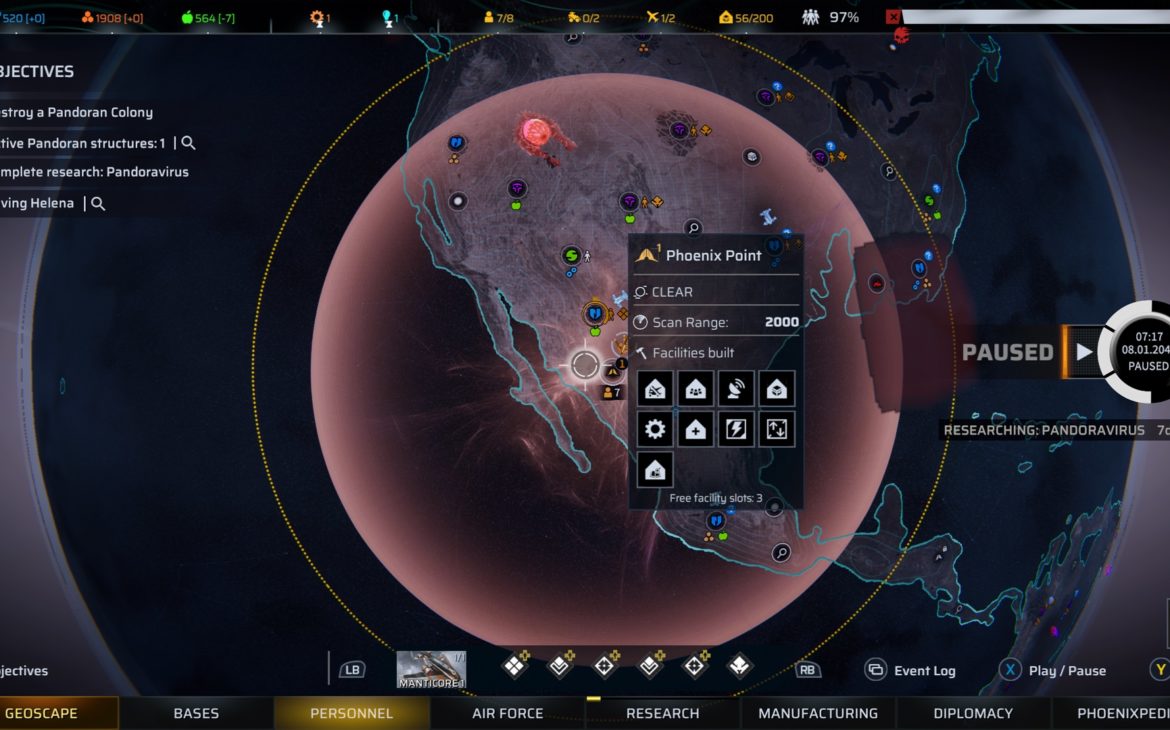
A Shiny Phoenix
Phoenix Point, to its credit, does look good graphically. Unit and armour designs are unique for different classes and factions, with some cool art direction for some units in particular. Weapons and explosion effects are decent, with some level destruction also on offer. I wouldn’t say its top of its class, with some effects a little muted and the destruction definitely scaled back from say, XCOM 2, but it looks good overall.
Maps are generally well designed, with unique aesthetics depending on whether you’re fighting in a specific haven location, Pandora-controlled territory or across the globe’s landmasses. Each faction’s haven has a particular look and feel which was engaging and meshed effectively with their ideals. Enemy unit designs are also creative, gross and clever all at once. There’s not a huge variety of enemy types, but as the campaign progresses, their look and utility evolves and adapts well, giving an organic and dynamic feel to the visuals as you notice subtle changes over time.
I appreciated the graphic presentation a lot, with the geoscape in particular being easy to navigate and engage with. The hud and menus could have done with a bit of work to make them less cluttered and a pain to navigate however. But that’s a relatively minor gripe with an otherwise solid looking title.
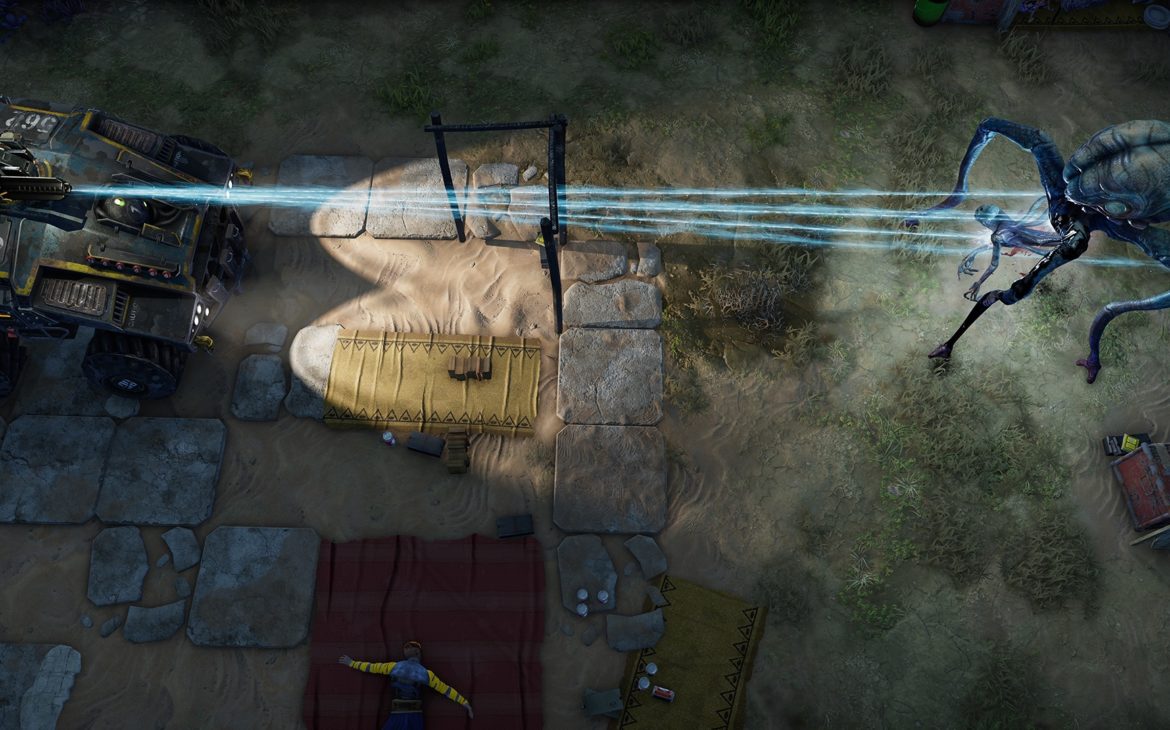
Pandorans Aren’t The Only Bugs
Sadly, we have to come to Phoenix Point’s largest… *cough* bug… bear – its performance. During my couple dozen hours playtime, I had 4 hard crashes back to the PS menu. No biggy, it autosaves after turns right? Nope. Phoenix – incredibly, given XCOM’s excellent autosave system – only autosaves upon entering a battle, not during it. Spend 20 minutes getting your soldiers through an intense, brutal fight unscathed only to lose all that progress when it crashes at the loading screen back to the geoscope map. Infuriating.
Not as annoying though, as the all-too-frequent glitch I experienced more times than I could count, where various button inputs would just randomly stop working when entering a battle. It’s amazing how much you depend on X and O in each scenario and how royally screwed you are without them. Again, a quit and reload is required. Frustrating.
Finally, there were numerous smaller issues. Attempting to load a save or quit to the menu during an aerial combat encounter? The loading screen will just never load, perpetually stuck. One too many enemy reinforcements arrive in one skirmish? Framerate gets knocked very, very noticeably. Whether it was a bug or not I can’t be certain, but given the problem discovering Pandoran lairs (and the fact the trophy list suggests almost no one else has cleared one despite it being out multiple days) hindered my ability to stabilise my campaign, I’m classing that too as a glitch currently. One of my main story objectives was to capture a Siren enemy type, only for one to not spawn over the next 7-8 battles.
It was one annoying issue after another, which initially wasn’t too much of a problem as the gameplay loop kept me hooked. However, after hitting 10-15 hours and the midgame of the campaign, losing an hour of progress on a battle to a hard crash just become too tedious and maddening. In the end, what beat me wasn’t the Pandoravirus, it was the sheer amount of time the game kept wasting through its performance. Given they’ve had since December 2019 to fix, polish and iron out any bugs before porting it to consoles, it just isn’t acceptable or tolerable.

A Flawed Behemoth
With all 4 DLCs and a sprawling, lengthy campaign spanning dozens of hours, there’s a lot of content in this package probably making it worth the price point. The act of actually playing Phoenix Point is great, when it works. The core gameplay holds up well, with some tense and tactical turn-based combat utilising a wealth of options, abilities and strategies to mess around with. The global strategy is also engaging, pressurising and rewarding once you develop some rhythm and get to grips with its layers of complexity.
Unfortunately, despite how good these elements are, they’re so undermined by the myriad of technical issues, inconsistent rules, flawed mechanical components and just unfair methods, that it’s hard not to feel frustrated and annoyed when you play it for an extended period of time. I plan to see out my current campaign, if it’s even going to be possible and I want to try it without the more aggravating DLC activated to see if the experience improves at all. But in its current state, there’s too many issues with Phoenix Point to make it as great a game it undoubtedly could – probably should – be.
If you’ve enjoyed XCOM, there’s plenty in Phoenix Point worth jumping in to experience, with some new features adding a lot to the overall experience. There are plenty of individual aspects I thoroughly loved while playing, but as a whole package, Phoenix Point is lacking the polish and balancing needed to hold it alongside its superior predecessors. If you’re more unsure of tactical titles or can’t stand technically flawed games, keep an eye on this one in the hope it’ll be patched up in future.
Phoenix Point is a game I desperately wanted to love. It has exceptionally complex and deep mechanics, solid turn-based combat systems and fun global strategy gameplay, coupled with a decent story and some decent new additions to provide it its own identity. It is also, however, riddled with technical problems, inconsistent mechanics and frustrating difficulty spikes. Like a true phoenix, it can rise with glory when it wants to, I only wish it didn’t thud back down to ashes so frequently.

Phoenix Point is out now on PS4 (reviewed on PS5), Xbox One, PC and Stadia.
Developer: Snapshot Games
Publisher: Snapshot Games
Disclaimer: In order to complete this review, we were provided with a promotional copy of the game. For our full review policy, please go here.
If you enjoyed this article or any more of our content, please consider our Patreon.
Make sure to follow Finger Guns on our social channels –Twitter, Facebook, Twitch, Spotify or Apple Podcasts – to keep up to date on our news, reviews and features.
